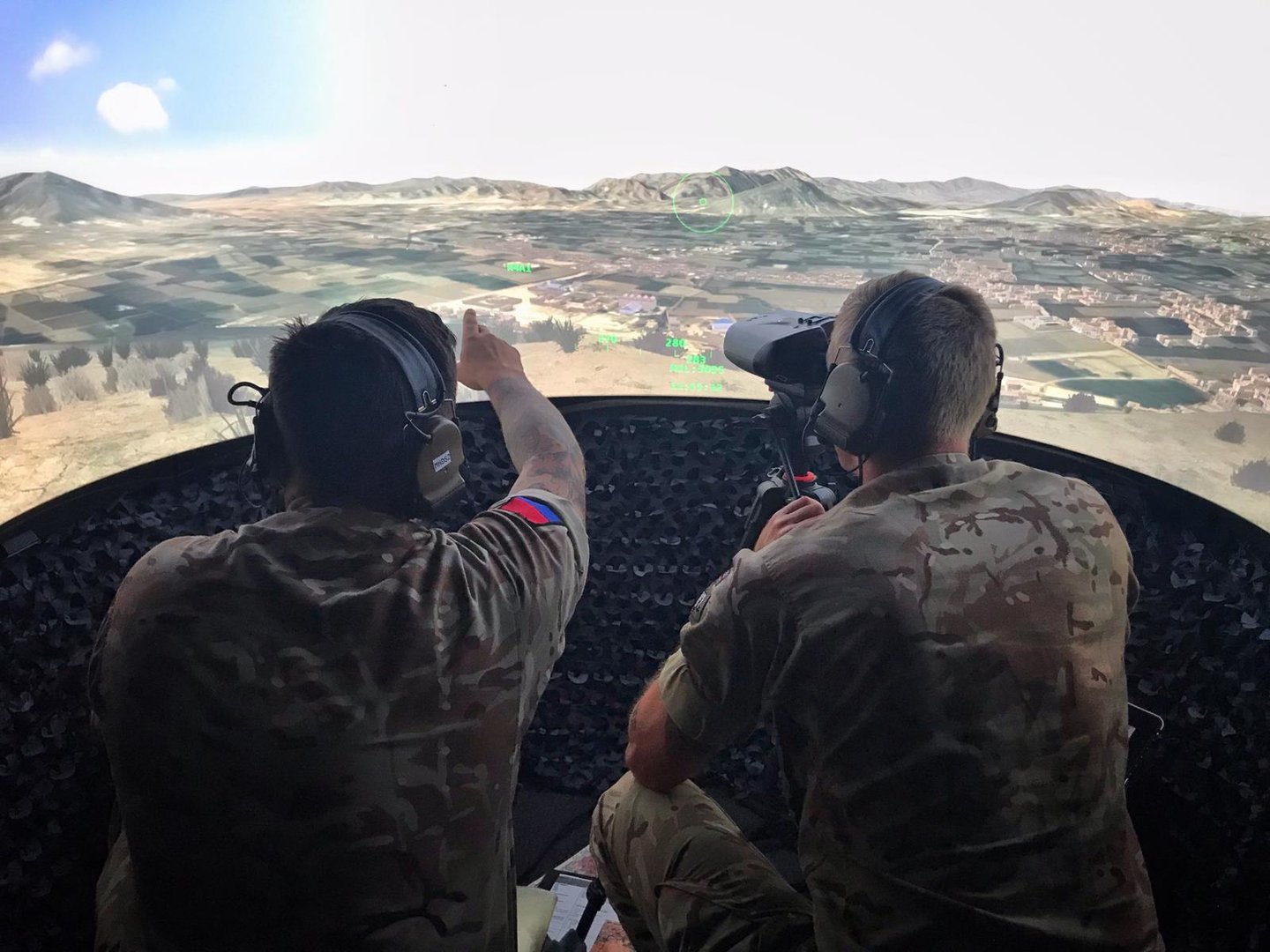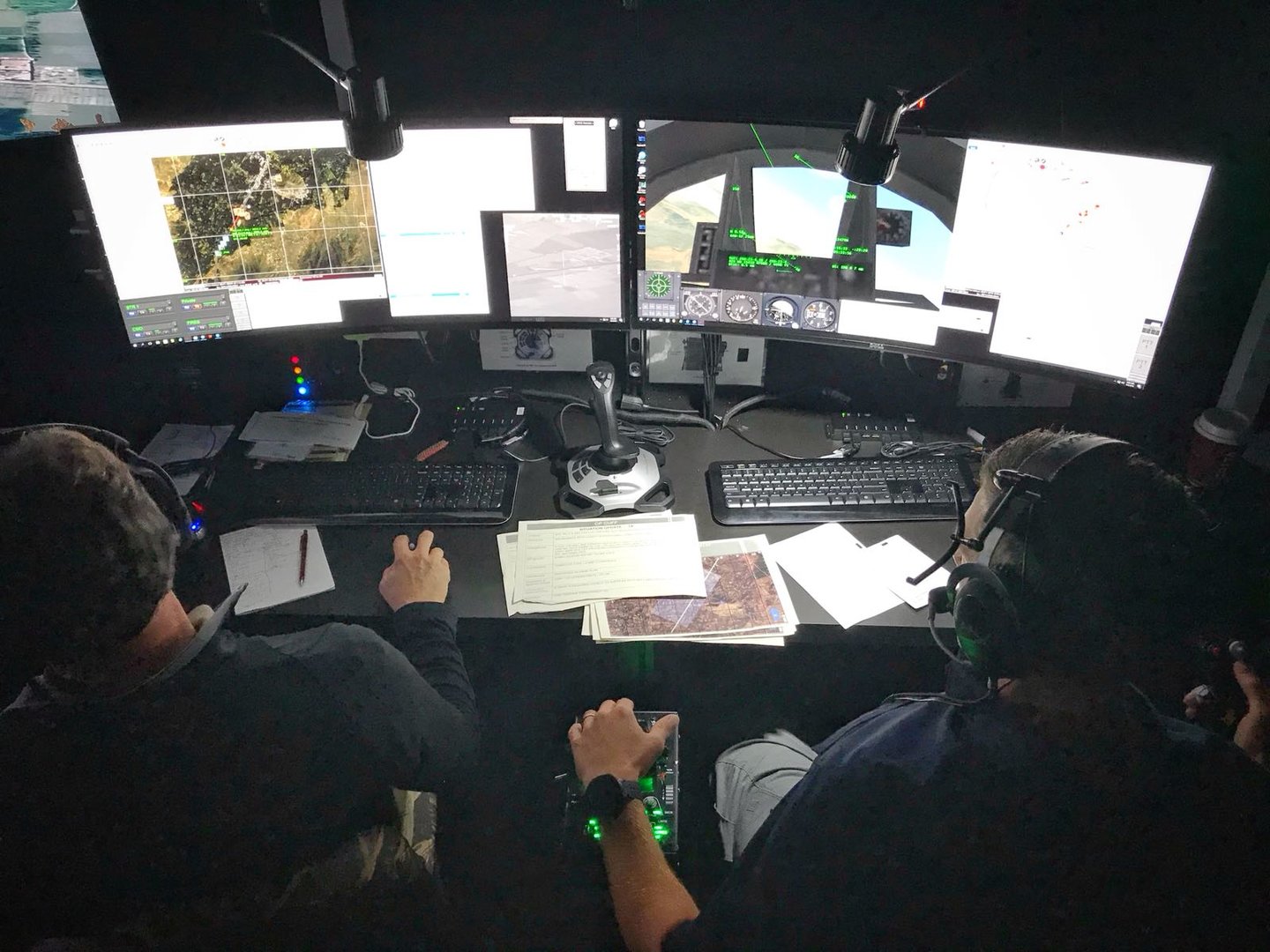Training & Simulation
Mixed reality training: Elbit Systems UK
From expediting pilot training to merging virtual simulation components with real systems, Elbit Systems UK CEO Martin Fausset tells Harry Lye about the company’s latest developments in military training and simulation technology.

// RAF Texan T-6C training aircraft. Image: Crown Copyright / MOD
Part of Elbit’s current approach to training and simulation (T&S) is changing the traditional process from a classroom-based experience to one that embraces technology and a less rigid learning path. The company’s most important developments in this space are based on its position in the market as not only a T&S provider, but also as a developer of systems.
Leveraging this combination of expertise allows Elbit to create training environments by injecting virtual threats into real systems. This can, for instance, allow a pilot to practice engagements in the aircraft using real systems, not just a synthetic version. In another example the company’s system can take an electro-optical sight and insert virtual entities into the real scenery that a soldier is scanning, whether it is a vehicle or a person. This, while challenging, can be done while the vehicle is in motion.
This hybrid or ‘mixed reality’ approach enhances the realism of the training environment and can help give personnel a better understanding of how to react to a threat scenario.
Full circle: manufacturing to training
“One of our strengths is we can fuse the actual technology with the training and the simulation technology so you've got a complete circle,” says Elbit Systems UK CEO Martin Fausset. “That enables us to work quite hard at things like embedded threats.
“We make the head-up display (HUD) on the pilot’s helmet. We make the black box that injects the threats into the scenario so when you're flying you suddenly get illuminated by radar or you get attacked by a missile or whatever the threat is, and you use your real systems to do what you would normally do in the actual engagement, but in a virtual context. I think that's a very powerful thing for training.”
For Elbit, part of its current T&S ethos stems from the digitisation of warfare, which leads to personnel having to process more information and interact with more systems than ever. Elbit says it has the ‘unique ability’ to connect simulators and simulation to the digital-era technologies armed forces are operating in.
“In a full mission rehearsal, moral dilemmas such as casualties, hostages or civilians as well as high-end threats such cyberattacks can be injected into a scenario for added realism.”
“We are organised into divisions, we have an aerospace division, we have a land division,” Fausset says. “But we're manufacturers, we're system developers, we are high-end system provider. We make the actual equipment and systems that we are training and simulating.
“That puts us in a very good position to fuse the two things. That is something that probably is slightly different to many simulation companies which are just focusing on the synthetic side of it. We can marry up the real equipment, and the synthetic, and the training into one package. Which is a very powerful piece of synergy that we can offer.”

An example of Elbit’s Joint Fires Mobile Trainer in use
Another aspect of Elbit’s strategy is a push for added realism as a part of that blended experience of virtual and real aspects. Fausset explains that in a full mission rehearsal, moral dilemmas such as casualties, hostages or civilians as well as high-end threats such cyberattacks can be injected into a scenario for added realism.
“The other area that we're increasingly focused on is trying to differentiate our training offer from others,” he adds. “There's a radical difference between simulation and mission rehearsal. The simulation end of the spectrum is teaching you how to use the equipment; mission rehearsal is teaching you how to fight with the equipment.
“Our training philosophy is progressive. You will start at one end and work up to full mission rehearsal where you can inject all sorts of realism into the scenario that you are modelling.”

The role player can directly control objects in the simulator and provide fire effects
Staying ‘ahead of the game’
For armed forces, training can often be a very procedural process. A fighter pilot, for example, must go from aircraft to aircraft, slowly building their wings until they can advance to an F-35 or Eurofighter Typhoon. For Elbit, this approach is something that could change. Discussions are currently underway about changing the pace of training, and if possible skipping steps between aircraft.
“There are now people coming off the basic flying training we've done on our Grob aircraft and skipping the traditional next step of the turboprop phase going straight on to fast jets,” he exaplains.
“In time, we'll probably be able to put people from the turboprops that we are providing, the T-6 Texan, which again is a very highly capable aircraft and may be enhanced by some of our embedded training technologies. We may be able to put people through that phase of the training and go straight to the F-35 skipping the Hawk, which would be an important improvement in the diameter of the pipeline and the flow of people through to flight.”
“Elbit looks for commercial technologies that can be transferred to the military context and runs an incubator for startups that can help the different aspects of its business, including T&S.”
This kinds of approach, Fausset says, reflects a domain ‘that’s moving very fast’ and the company is working to find and field new technologies supporting this need. Internally Elbit looks for commercial technologies that can be transferred to the military context and runs an incubator for startups that can help the different aspects of its business, including T&S.
“We run startups, we have an incubator in which we grow companies and help them with their journey, and in some cases, they produce technology which is directly relevant to training and simulation,” Fausset says. “In other cases, we use them to spin off technology which had a military origin into another application. That kind of entrepreneurial and innovative environment is all you need to stay ahead of the game and training and simulation.”

An example of high-fidelity graphics used in the Joint Fires Mobile Trainer simulation